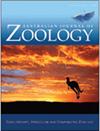澳大利亚肺鱼Neoceratodus forsteri(骨鱼目:Dipnoi)的成骨作用
IF 1
4区 生物学
Q3 ZOOLOGY
引用次数: 0
摘要
澳大利亚肺鱼Neoceratodus forsteri是新齿科唯一现存的成员,它的骨骼发育有几种类型。在这一物种中,真皮和副软骨在头盖骨和下颌骨周围形成,以保护大脑和感觉器官,支持牙齿和促进口腔功能。脊索贯穿一生。方形软骨和梅克尔软骨仍然是软骨,软骨头盖骨也是如此。舌骨弓的前部,基骨和下骨,不骨化。角状骨与骨下关节相连,骨化于软骨周围,枕外骨和躯干肋骨,包括颅肋也是如此。成年鱼的枕外骨嵌在颅骨软骨中,颅肋是固定不动的。骨骼的某些部分,如胸鳍、腹鳍和骨盆带,仍然是软骨的,这些鳍中的骨骼部分类似于尾巴的结构。完全发育的骨是骨小梁或板层,不包括血管成分。活的澳大利亚肺鱼没有软骨内成骨。本文章由计算机程序翻译,如有差异,请以英文原文为准。
Osteogenesis in the Australian lungfish, Neoceratodus forsteri (Osteichthyes: Dipnoi)
ABSTRACT Several types of bone development are present in the Australian lungfish, Neoceratodus forsteri, the only extant member of the family Neoceratodontidae. In this species, dermal and parachondral bones form around the chondrocranium and mandible, to protect the brain and sense organs, to support the dentition and to facilitate oral function. The notochord persists throughout life. The quadrate and Meckel’s cartilage remain cartilaginous, as does the chondrocranium. Anterior elements of the hyoid arch, the basihyal and hypohyals, do not ossify. The ceratohyal, which articulates with the hypohyals, ossifies perichondrally, as do the exoccipital bone and the ribs of the trunk, including the cranial rib. The exoccipital bone is embedded in the chondrocranium in the adult fish, and the cranial rib is immobile. Some elements of the skeleton, such as the pectoral and pelvic fins, and the pelvic girdle, remain cartilaginous, and the skeletal elements in these fins resemble the structure of the tail. Fully developed bone is trabecular or lamellar, and does not include vascular elements. Endochondral ossification does not occur in the living Australian lungfish.
求助全文
通过发布文献求助,成功后即可免费获取论文全文。
去求助
来源期刊
CiteScore
2.40
自引率
0.00%
发文量
12
审稿时长
>12 weeks
期刊介绍:
Australian Journal of Zoology is an international journal publishing contributions on evolutionary, molecular and comparative zoology. The journal focuses on Australasian fauna but also includes high-quality research from any region that has broader practical or theoretical relevance or that demonstrates a conceptual advance to any aspect of zoology. Subject areas include, but are not limited to: anatomy, physiology, molecular biology, genetics, reproductive biology, developmental biology, parasitology, morphology, behaviour, ecology, zoogeography, systematics and evolution.
Australian Journal of Zoology is a valuable resource for professional zoologists, research scientists, resource managers, environmental consultants, students and amateurs interested in any aspect of the scientific study of animals.
Australian Journal of Zoology is published with the endorsement of the Commonwealth Scientific and Industrial Research Organisation (CSIRO) and the Australian Academy of Science.

 求助内容:
求助内容: 应助结果提醒方式:
应助结果提醒方式:


